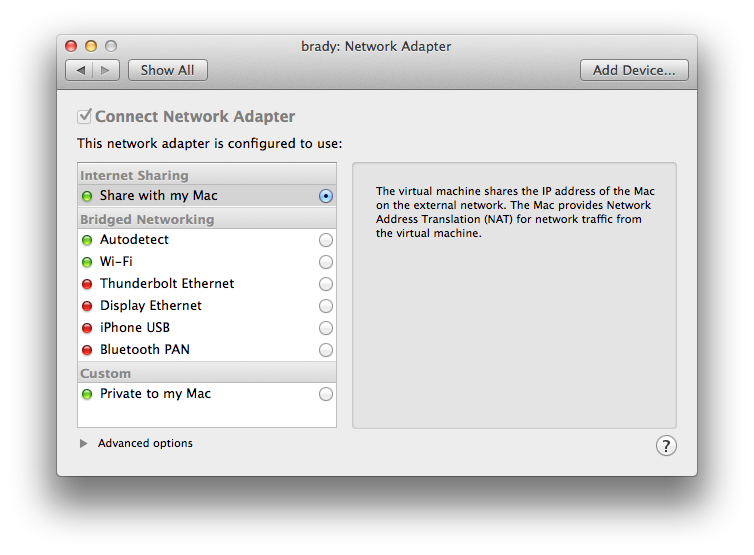

Now we can put this line (the bottom line in our fstab file below) in our /etc/fstab file and have the whole thing automagically happen. IF everything has gone fine without errors and you have tested the folders Then proceed as below. Your folders from your Mac desktop and downloads should now appear in the /home/user/Shares folder.

Your Mac will ask you if you want to allow VMware to share folders, please allow.

$ /usr/bin/vmhgfs-fuse -o auto_unmount,allow_other. Now mount the shares you have selected from the Vmware GUI under sharing to the folder you just created by doing the following at a terminal. Make a Folder in your linux users home folder where these shared folders will show up. Set some folders you want to share from MacOS in the VMware Sharing settings (see menu items under Virtual Machine)įor example in mine I had set Desktop and Downloads from my Mac OS. I can either move all development folders to Guest - setup NFS between, guest and host. I do understand there are more than one solution available. the development tools create symbolic links while compilation and it fails. Set some Folders to share from your Mac desktop. I use Linux guest as development box, and all related folders are shared between my Mac and Ubuntu. Loaded: loaded (/usr/lib/systemd/system/rvice enabled vendor preset: disabled)Īctive: active (running) since Thu 13:39:52 EST 3min 6s agoĭec 05 13:39:52 lee-manjaro systemd: Started Open Virtual Machine Tools (VMware Tools).
rvice - Open Virtual Machine Tools (VMware Tools). Make sure the service is running after a reboot $ sudo systemctl status rvice $ sudo systemctl start rviceĪfter starting the services without seeing any errors then you can Enable them which will start them at boot time. These commands are typed into the terminal (bash) you do not type the $. Then you need to start and then enable some services from within the Manjaro guest vm. Again, that was a design decision taken a long time ago.First you must have open-vm-tools installed which has happened by default for me even when I used the minimal Gnome release. Create a second share without the follow option to do that if you need more. You should now be able to follow symlinks.Ĭaveat, though the share following symlinks now will not be allowed to also create symlinks. You will then need to add the following line (modifiying it accordingly to be for the share you want to enable following symlinks change the number 0 to whatever number your share is): To do that quit out of Fusion and find the location of your VM (note, you might need to select Show Package Contents from the Finder contextual menu of the VM package to see the files).Įdit the file ending in ".vmx" extension. To modify this behavior and allow the symlinks to be followed on a particular share you will need to edit the VMX file for that particular Share for that VM. They will have to also only be links contained within the share too. The design of HGFS for Linux VMs is that following symlinks is not allowed by default. This symlink topic is a little thorny when coming to Shared Folders. I am the developer for the VMware Shared Folders feature. In all shared cases, the symlinks look and behave properly when accessed from OS X and the behavior seems independent of whether the link is created by the host or the guest. Ls: cannot access foolink/: No such file or directoryīut if I replace the link with a longer more "complex" one it works properly (still in the shared hgfs directory): However, within a shared (hgfs) directory I get this: This is the behavior I get on the guest within a native Linux directory, or on the native OSX system - it is what I would expect: The guest is unable to follow some symlinks whilst others (generally longer ones) work. I am experiencing strange behavior with symbolic links accessed from the Linux guest in a shared folder. I have a Linux x86_64 guest running on an OS X Lion host.







 0 kommentar(er)
0 kommentar(er)
